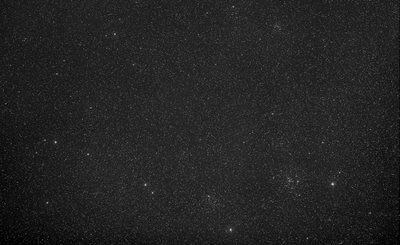20061021 - deep sky, meteor shower, & a missed last crescent
Session name: 20061021.0415
Location: Carl Schurz Park (CSP), Central Park, NYC
Moon Age @ 06:39/Illumination: 28d22h53m at moonrise/0.6%
Conditions: Clear skies. Transparency was very good. Seeing was fine as judged by binoculars.
NELM: 5.0++
Companions: Charlie
Instruments: Takahashi 22x60 binoculars, Fujinon Polaris 7x50 FMTR-SX

This morning Charlie and I met at CSP primarily to catch the last crescent Moon. Arriving at the park early enough I concentrated on some deep sky hopping while Charlie did some meteor counts to determine the zenithal hourly rate (ZHR).
I had the Taks set up to calibrate landmarks on the horizon with azimuthal measurements. At.6% lunar illumination this was going to be tough and knowing where to look is key. If the field of view is setup properly one can concentrate on working with your eyes and focusing to detect the low contrast crescent Moon rather than trying to find it with sweeps or scans of field. Like most things one has to know where and what you are looking for.
It turns out that this crescent was undetected. I may have been looking slightly too far north at the time, like half to three-quarters of a degree. The sky brightened considerably but I believe this was doable. Next time... ;^ D
After getting my bearings on the horizon and waiting for moonrise, I did some starhopping with the Taks in Canis Majoris, Puppis, and Monoceros. I looked at mostly the bright Messier open clusters and the tiny cluster that hugs tau Canis Majoris. Afterward I laid back on a park bench, threw up a towel along the backrest to shield the light from my eyes and scanned the sky with 7x50 bins. Wow! really beautiful sky even if it is a bright city sky. Wonder churns in my head as I look to star-studded sky around Orion's Belt and the stellar nursery in the Sword. There are other people out there. That blister on the giant molecular cloud is there grab our attention.
The photo above created by Cartes du Ciel and RealSky Survey shows a field of view that includes 3 clusters. The two larger, brighter ones at the bottom are M46 and M47. NGC2423 is the knot of stars above M47 which is to the right. M46 is a low surface brightness object and not easy to see in the city without a lot of glass. In the 4" Takahashi refractor this open cluster would not disclose itself until I got the 10" on it. I haven't tried the 6" reflector but suspect that it may do the job.
As for the meteors, I wasn't that interested and saw at least a dozen and probably more without any effort. I would look up a zing! across the sky they flew. It would be the later this day when we went to dark sky that a phenomenal meteor show was put on.
<< Home